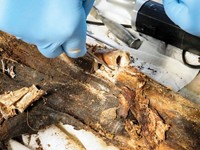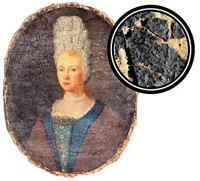Advertisement
Grab your lab coat. Let's get started
Welcome!
Welcome!
Create an account below to get 6 C&EN articles per month, receive newsletters and more - all free.
It seems this is your first time logging in online. Please enter the following information to continue.
As an ACS member you automatically get access to this site. All we need is few more details to create your reading experience.
Not you? Sign in with a different account.
Not you? Sign in with a different account.
ERROR 1
ERROR 1
ERROR 2
ERROR 2
ERROR 2
ERROR 2
ERROR 2
Password and Confirm password must match.
If you have an ACS member number, please enter it here so we can link this account to your membership. (optional)
ERROR 2
ACS values your privacy. By submitting your information, you are gaining access to C&EN and subscribing to our weekly newsletter. We use the information you provide to make your reading experience better, and we will never sell your data to third party members.
Analytical Chemistry
Assessing A Fingerprint’s Age
Studying levels of lipid and protein oxidation with fluorescence spectroscopy can reveal whether a fingerprint is fresh or weeks old
by Bethany Halford
June 2, 2014
| A version of this story appeared in
Volume 92, Issue 22
Any fan of police procedurals knows that fingerprints can be key evidence in solving a crime. But there’s a problem: There’s no reliable way of knowing whether a fingerprint was left at the time of the crime or days—even weeks—earlier. Inspired by forensic methods for estimating the age of bloodstains, a research team in the Netherlands has come up with a way to do the same for fingerprints (Angew. Chem. Int. Ed. 2014, DOI: 10.1002/anie.201402740). When crime scene analysts assess the age of blood, they measure levels of hemoglobin oxidation products. Saskia A. G. Lambrechts of Academic Medical Center at the University of Amsterdam and coworkers reasoned they could use fluorescence spectroscopy to monitor the levels of oxidation in the lipids and proteins found in fingerprints over time and thereby determine their age. Using this technique, the researchers were able to estimate the age of 55% of men’s fingerprints that were up to three weeks old with an uncertainty of 1.9 days. The technique didn’t work for fingerprints left by women because of their lower excretion levels of the relevant skin biomolecules. To solve that dilemma, the researchers say they’ll need more efficient techniques for studying fingerprint lipids and proteins.





Join the conversation
Contact the reporter
Submit a Letter to the Editor for publication
Engage with us on Twitter